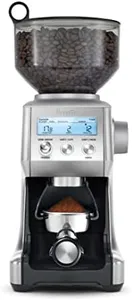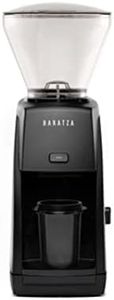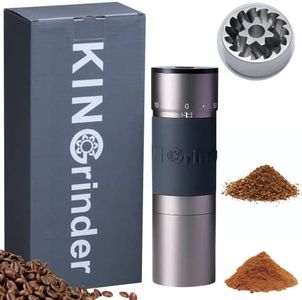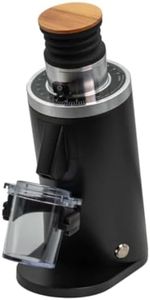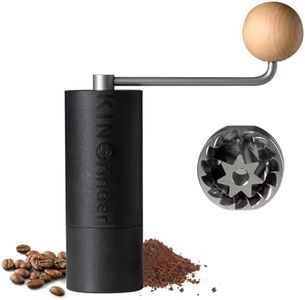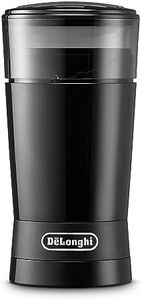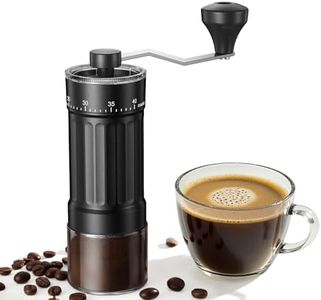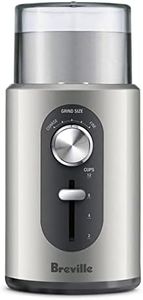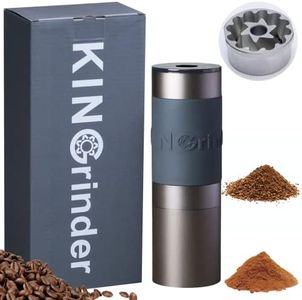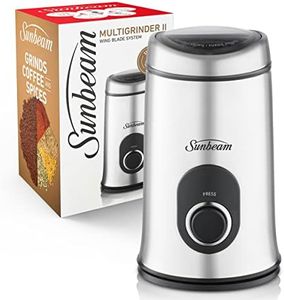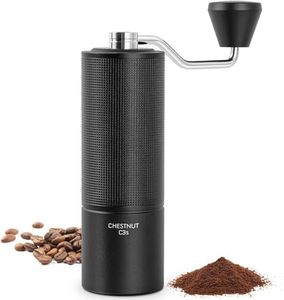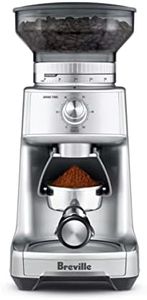We Use CookiesWe use cookies to enhance the security, performance,
functionality and for analytical and promotional activities. By continuing to browse this site you
are agreeing to our privacy policy
10 Best Coffee Grinders
From leading brands and best sellers available on the web.By clicking on a link to a third party's website, log data is shared with that third party.
Buying Guide for the Best Coffee Grinders
Choosing the right coffee grinder can have a huge impact on the quality and taste of your coffee. Coffee grinders come in many types and with a variety of settings, so understanding what matters most for your brewing style and daily use is essential. Grinders can largely be categorized by how they grind, how consistent the grind is, their speed, ease of cleaning, and how much coffee they can hold or grind at a time. The ideal grinder for you depends on your preferred brewing method and how much control you want over your coffee's flavor.Grind Type (Blade vs Burr)Coffee grinders use either blades or burrs to break down coffee beans. Blade grinders chop beans with spinning blades and tend to be less expensive, but the grind size is less uniform, which can lead to inconsistent flavor. Burr grinders crush beans between two surfaces and produce a much more consistent size, which is crucial for balanced flavor extraction. If you're brewing methods like espresso or pour-over which benefit from precise grind size, burr grinders are recommended, while blade grinders might suffice for drip coffee or French press where absolute uniformity is less critical.
Grind Size SettingsThe ability to adjust grind size is important because different brewing methods require different coarseness—espresso needs a fine grind, while French press needs a coarse grind. Some grinders offer a wide range of preset settings, while others have only a few. If you like to experiment with multiple brewing methods or want to refine your coffee flavor, look for a grinder with lots of settings. If you always use the same method, a grinder with just a few options may be enough.
Grind ConsistencyConsistency refers to how uniform the ground coffee particles are after grinding. More consistent grounds lead to more balanced and precise flavor, especially in espresso and pour-over. Burr grinders generally offer better consistency compared to blade models. If you notice uneven flavor, your grinder's consistency may be the issue. If taste precision is important to you, prioritize models known for good consistency.
CapacityCapacity means how much coffee beans the grinder can hold and grind in one go. Some are designed for single servings, while others can handle enough for a whole pot or several cups. For occasional single-cup brewing, a small-capacity model will be fine, but for entertaining or brewing for several people at once, a higher capacity can save time.
Ease of CleaningThe more often you use your grinder, the more you'll have to clean it to prevent stale flavors and oil buildup. Some grinders have removable parts that are easier to wash, while others are more difficult to take apart. If you use oily beans or switch bean types often, look for a grinder with components that are simple to disassemble and clean.
Manual vs ElectricManual grinders are operated by hand and tend to be quieter, portable, and more affordable, but require more effort and time to grind. Electric grinders are faster and more convenient, making them suitable for daily use and larger quantities. For travel or occasional coffee, a manual model could be practical, while for regular, quick brewing, electric is generally better.
Noise LevelSome grinders can be quite loud, which might be disruptive if you make your coffee early in the morning or in a quiet space. Manual grinders are naturally quieter, while some electric models use design features to muffle noise. If noise is important to you, read reviews or look for models described as quiet or with noise reduction features.
